HBO’s Game of Thrones (typically, and before this current season) brandishes a consistent and high degree of fidelity to the nearly 5,000-page-long source material of George R.R. Martin’s A Song of Ice and Fire novels, but there still, of course, are differences. While most of these gaps from the page to the screen are small and detail-oriented, it is nonetheless the case that the most subtle discrepancies often hold the biggest insight into the adaptation process, into the demands of filmmaking, and into the rigors of the literary narrative.
This, then, is the anatomy of a key scene of Thrones – not because of its dramatic importance or visual effects whizbangery, but because of the telling nature of its realization.
Episode: “Unbowed, Unbent, Unbroken” (506)
Scene: Sansa’s marriage night
Sansa Stark’s – or is that now Sansa Bolton’s? – marriage night, for all its controversy and firestorm of media coverage, is a scene that is rather close to its counterpart in George R.R. Martin’s source material. What makes the television show’s take so fascinating to contemplate and dissect, however, is just how profoundly what little changes there are affect the whole rest of the tapestry that is Game of Thrones’s overarching narrative (or so we must assume, at least, given that we’re at last coming to the very edge of the published story thus far).
By far the most immediate difference between the two versions is the simple fact that Sansa is nowhere near Winterfell at this point in her literary storyline (or, really, at any other point in her arc save for the very beginning, all the way back in A Game of Thrones’s opening). In her stead is Jeyne Poole, a character who has a minor but relevant presence in the first novel and who has only appeared just once in the television series (“Winter Is Coming,” episode 101), essentially as an extra.
When King Tommen Baratheon signs the royal decree allowing Ramsay Snow to magically transform into Ramsay Bolton, heir of the Dreadfort and of the Wardenship of the North, the Lannisters – with the help of Lord Petyr Baelish, who had confiscated Jeyne after the fall of House Stark and forced her to work in his whorehouses – ship off Sansa’s former friend under the pretense that she is the long-lost Arya Stark, who has, they say, secretly been in a King’s Landing dungeon this entire time.
Ramsay, of course, is aware of the charade, as is his lord father, but as it is the appearance of legitimacy that matters most, he goes along with the plan. And in yet another deviation, the wedding itself is to take place in the northern town of Barrowton – until King Stannis Baratheon’s slow conquest of the north forces the Boltons to switch to the more removed location of Winterfell (which is simply too devastated in the books to be of any practical use to anyone).
Both alterations – changing out Jeyne Poole with Sansa and making Winterfell the new seat of House Bolton – can be attributed to the same golden rule that has been invoked so many times before to explain why showrunners Dan Weiss and David Benioff move heaven and earth to streamline Martin’s storytelling as much as they do: the conservation of characters (and, yes, Winterfell is a character in the series). Why introduce Sansa and Jeyne’s friendship in season one when audiences already have to invest in, say, Sansa’s relationship with Littlefinger? And why resurrect Jeyne now, four long years later, when Lady Stark is an individual that audiences have continually invested in in nearly every single episode since – and especially considering that the showrunners had already exhausted her material by the end of the fourth season? (When A Dance with Dragons concludes, Sansa is still in the Vale, awaiting the arrival of a distant member of House Arryn who she has been arranged to marry [since, apparently, Littlefinger means for little Robert Arryn to have an accident similar to his mother’s before long, making Sansa the Wardeness of the East and the North].)
(It is also worth noting that, in addition to keeping the narrative landscape less cluttered, there is a huge financial incentive to reusing those elements that have already been introduced in previous episodes: new sets don’t have to be designed and constructed [or new corresponding locations scouted], and new actors don’t have to be auditioned, cast, and, of course, paid.)
Dance with Dragons’s wedding proceeds mostly in keeping with “Unbowed, Unbent, Unbroken’s” depiction, on a chilly night in Winterfell’s godswood, but there is a noteworthy alteration of atmospherics: on the page, there is a dense mist hovering over all, adding a palpable sense of foreboding to the night’s proceedings. Theon, remarking on the wooded area’s appearance, describes it thusly:
He had never seen the godswood like this, though – grey and ghostly, filled with warm mists and floating lights and whispered voices that seemed to come from everywhere and nowhere. Beneath the trees, the hot springs steamed. Warm vapors rose from the earth, shrouding the trees in their moist breath, creeping up the walls to draw grey curtains across the watching windows.
The amount of additional time it would’ve taken to shoot the scene in this fashion would’ve been nearly astronomical – not just with generating all the fog needed to fill the soundstage on the day, but also to match the continuity of all the different takes and shots in the editing bay – so it’s easy to imagine this being the first element to be cut in a production meeting (if, indeed, it even made it to the first draft of the teleplay). Still, it’s remarkable to see just how closely the look and feel of the literary original comes through, particularly with director Miguel Sapochnik’s choice of shots that open the sequence; having the lights in the background be out of focus is a wonderful invocation of Martin’s fogginess, making the candles look like “pale fireflies floating in a warm grey soup.” And the episode’s light snow is a sublime substitution for the mist, evoking a distinct sense of atmosphere (and for only a fraction of the cost!).
Finally, there is the moment of truth: the bedding itself. Just as Sansa is a wholly different character than Jeyne Poole, Ramsay’s treatment of her is considerably divergent, as well – at least, on the surface (the sheer brutality of his actions, of course, remain unchanged in the visual medium). In the episode, he tears Lady Stark’s clothes off, bends her over the bed, and forces himself on her while making Theon Greyjoy watch; in the book, he forces Reek to cut the fake Arya’s clothes, including her undergarments, off, and then – well, perhaps it’s best to quote the passage in full.
Ramsay smiled his wet smile. “Does she make your cock hard, Reek? Is it straining against your laces? Would you like to fuck her first?” He laughed. “The Prince of Winterfell should have that right, as all lords did in days of old. The first night. But you’re no lord, are you? Only Reek. Not even a man, truth be told.” He took another gulp of wine, then threw the cup across the room to shatter off a wall. Red rivers ran down across the stone. “Lady Arya. Get on the bed. Yes, against the pillows, that’s a good wife. Now spread your legs. Let us see your cunt.”
The girl obeyed, wordless. Theon took a step back toward the door. Lord Ramsay sat beside his bride, slid his hand along her inner thigh, then jammed two fingers up inside her. The girl let out a gasp of pain. “You’re dry as an old bone.” Ramsay pulled his hand free and slapped her face. “I was told that you’d know how to please a man. Was that a lie?”
“N-no, my lord. I was t-trained.”
Ramsay rose, the firelight shining on his face. “Reek, get over here. Get her ready for me.”
For a moment he did not understand. “I… do you mean… m’lord, I have no… I…”
“With your mouth,” Lord Ramsay said. “And be quick about it. If she’s not wet by the time I’m done disrobing, I will cut off that tongue of yours and nail it to the wall.”
(And just in case this weren’t sadistic enough, before the scene in question even begins, one of “the Bastard’s boys” boasts as they make their way from the Great Hall to the Great Keep that “Lord Ramsay had promised him a piece of the bloody sheet as a mark of special favor.”)
Why the change in Ramsay’s demeanor to his newfound wife? Firstly, it can at least partially be attributed to the fact that his bride is a real Stark, which, in turn, really legitimizes his claim as Lord of Winterfell and Warden of the North. As Jeyne herself notes in Dance, “He knows who I am, though. Who I really am. I see it when he looks at me. He looks so angry, even when he smiles, but it’s not my fault.”
Secondly, there’s the well-documented practice of Benioff and Weiss taking the nastier edges off of their television characters, which, in this case, helps keep the scene be as understated as possible (as much as a rape can be understated, of course). Thirdly – and most importantly – there’s the simple effect of replacing a tertiary character, at best, with one of the main leads, an individual who has had the screen time and character development both to inherently and drastically up the shock value without having to tack on additional layers of graphicness (though it should be noted that such was not the case with the infamous Red Wedding [“The Rains of Castamere,” 309]; even though Talisa Stark was added to the huge roster of victims, the executive producers still found it advantageous to explicitly show her being stabbed in the pregnant belly).
There is one final observation to be made. Weiss and Benioff throw in (early, at least) a small-but-notable addition to the Bolton storyline in the form of Lady Walda’s (supposed) pregnancy, a move designed to reassert Lord Roose’s dominance over his crazed bastard (and whose rough antecedent in the novels is arguably his taking Reek away from Ramsay and dressing him up once again as Theon Greyjoy, in order to give the fake Arya Stark away [should her childhood friend claim that it is, indeed, her, which of the northern lords and ladies would dare speak up and say otherwise?]). In this way, Ramsay and Sansa become something of kindred spirits – individuals whose lives threaten to spin out of their control by larger, mostly sinister forces, seemingly no matter what they themselves do to retain their agency. Perhaps this thematic (and ironic?) solidarity was part of the reason to team these two characters up in this narrative thread, generally, and this dramatic scene, specifically.
Then again, it could simply have been the chance to engage in yet another round of sexual one-upmanship that prompted the showrunners to make the move – a potent influence, given the nature of the source material and their premium cable format, to be sure.
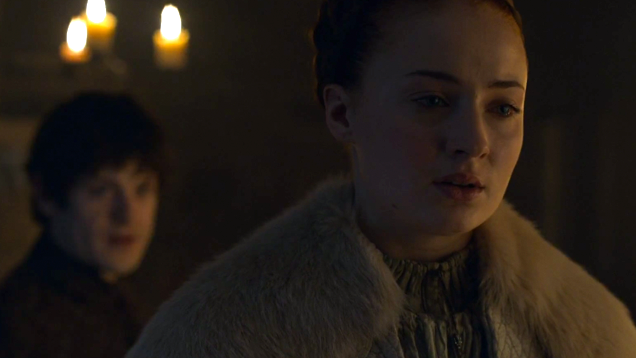
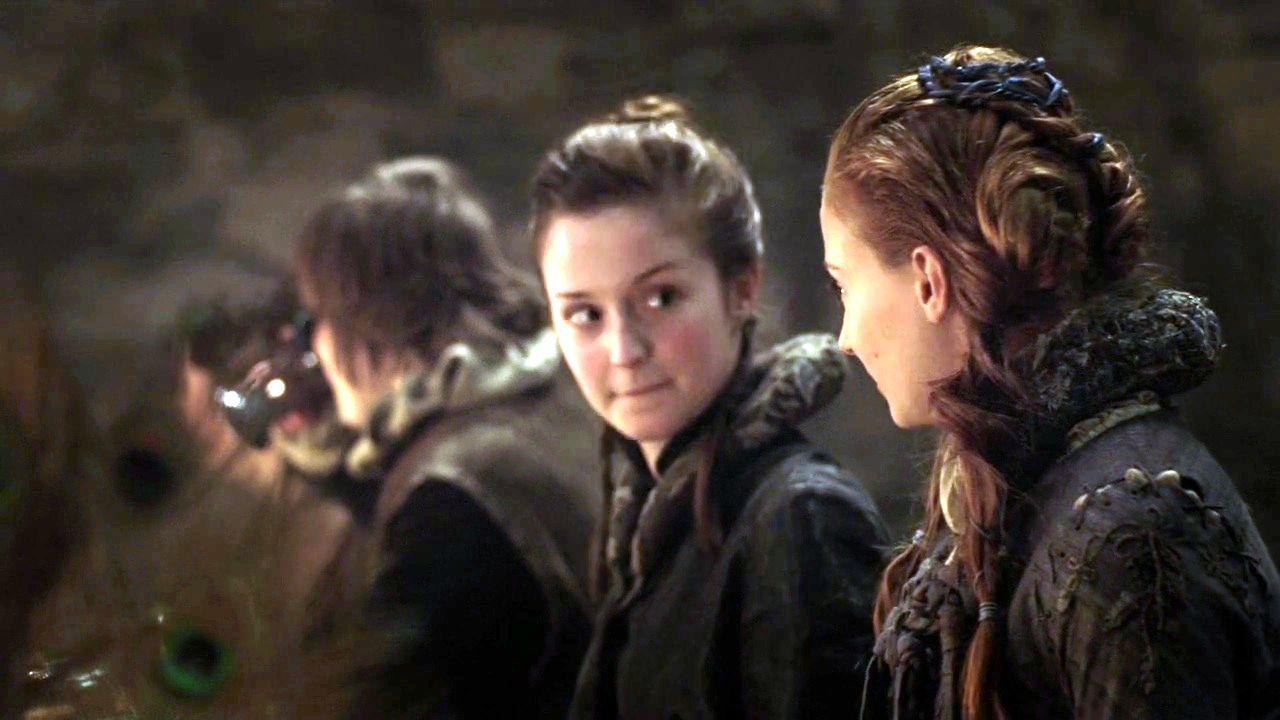
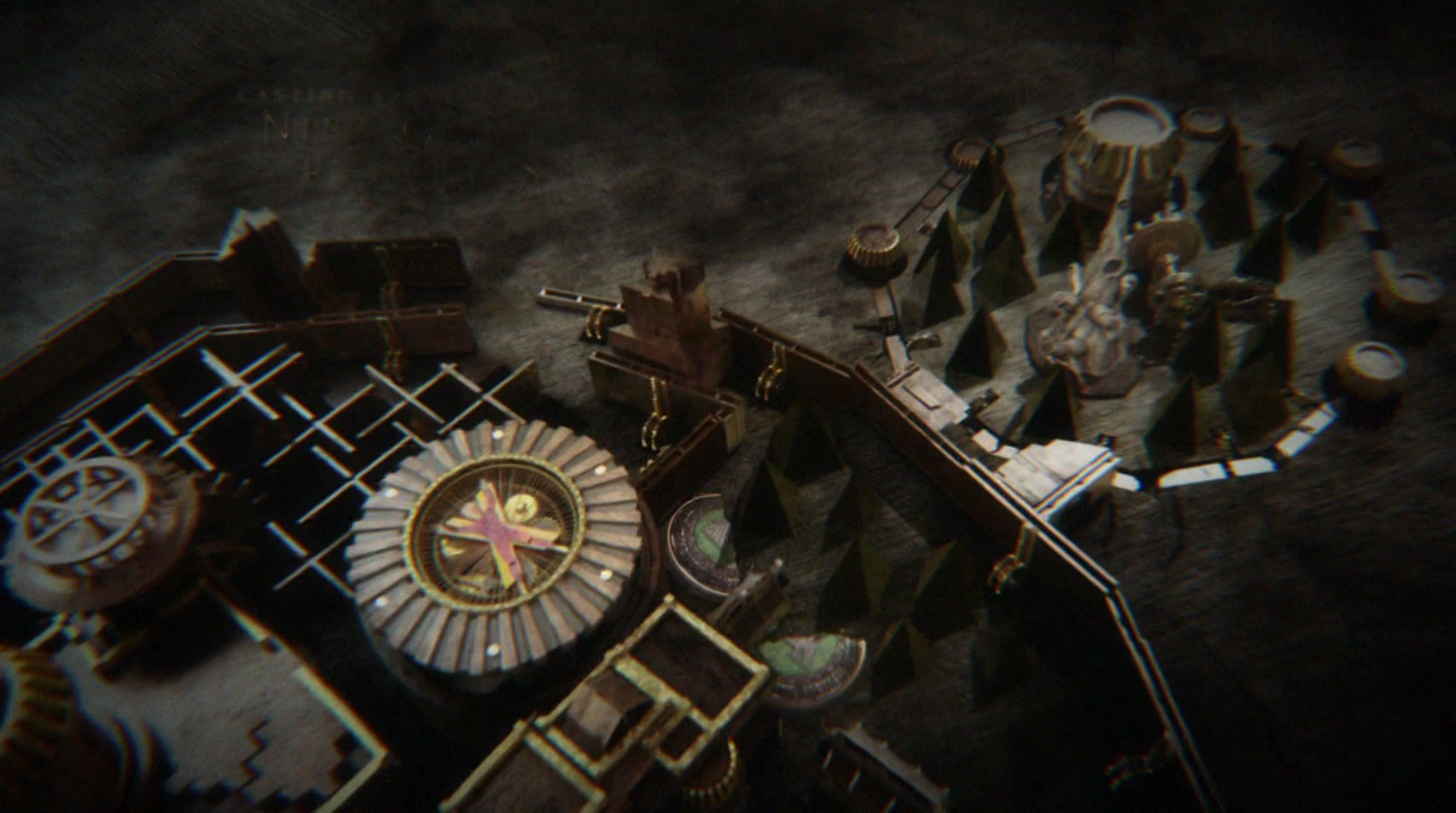
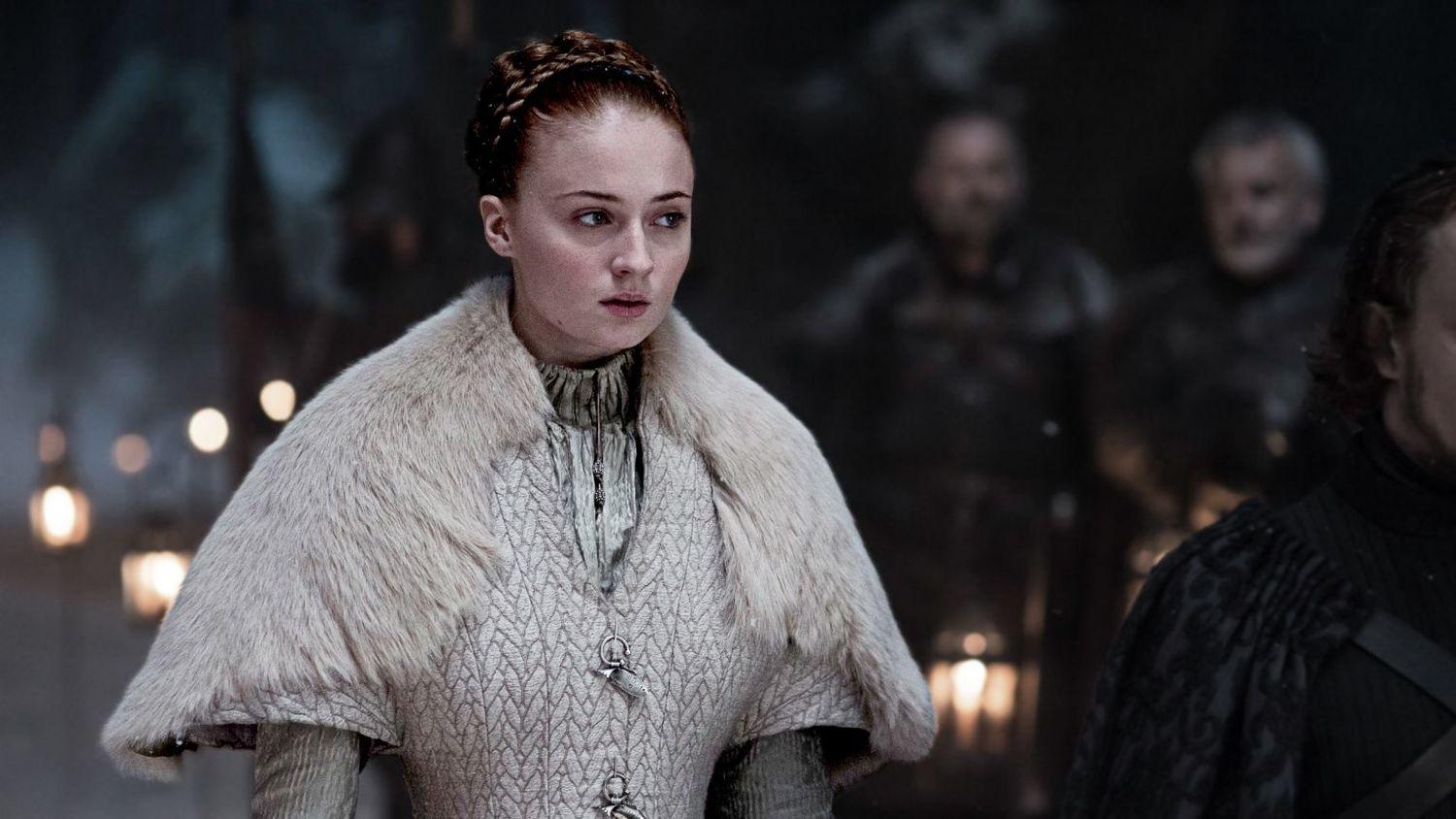
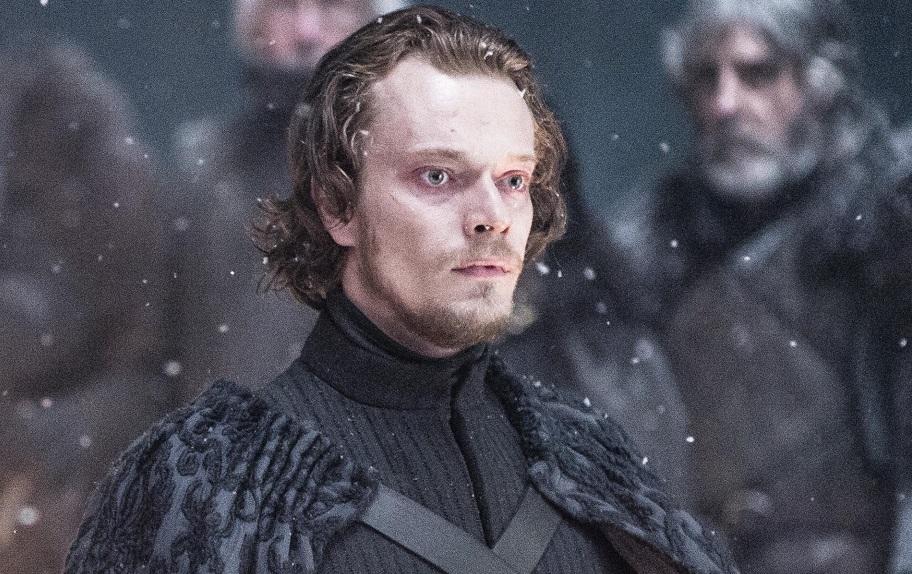
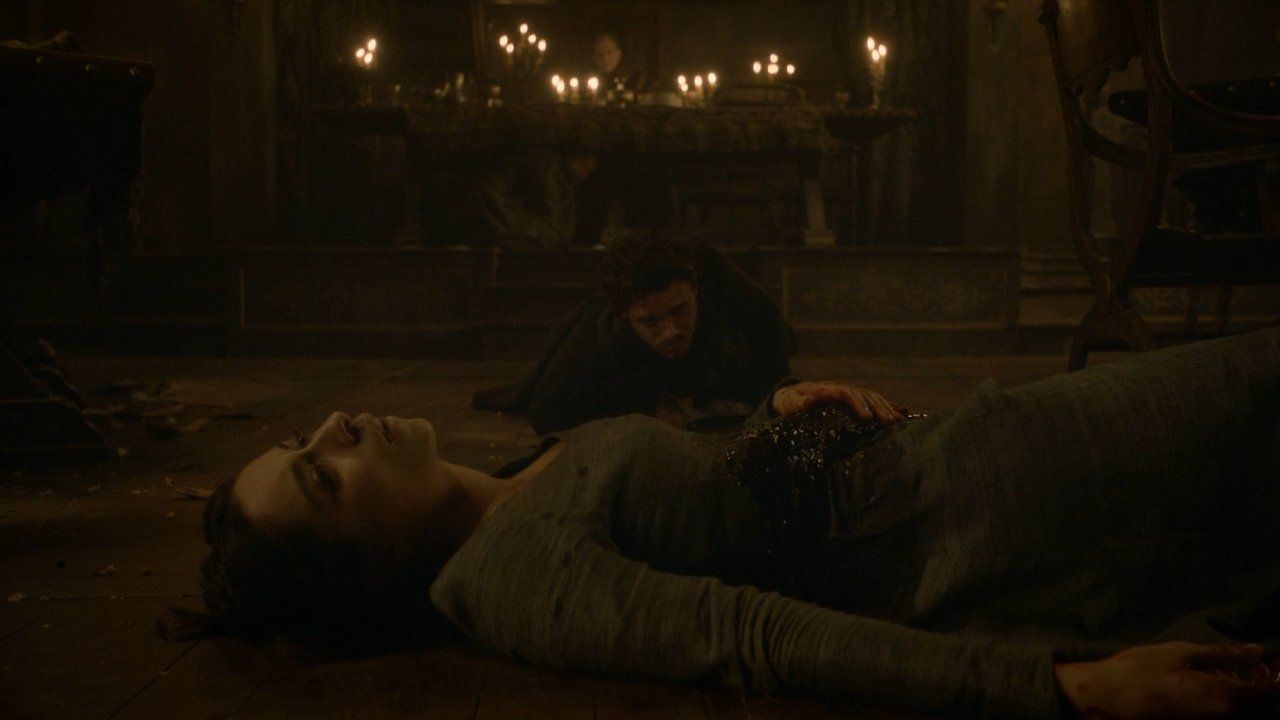
Nodor
I think another aspect to the changes are that Sansa, presumably, have a future role to play in the series which the original character probably doesn’t. The way her characterization is supposed to go might not fit with some Theon levels of torture.
Adding another post with spoilers since the tags kept disappearing.
I haven’t commented on this season nor on this site for quite a while, but this particular controversy with Sansa forced me to emerge from the woodwork.
First of all, I found the rape scene uncomfortable, terrifying and ultimately depressing to watch. Deep down I knew it was coming since I heard Sansa was going to be taking Jeyne Poole’s place in the adaptation. Like many of you I was hoping against hope that Sansa would somehow seduce Ramsay and not undergo the humiliation she received. Alas this was not to be. Do I think the rape scene was necessary? The real question is: was placing Sansa in Winterfell necessary? The moment she curtsied to Roose Bolton I said “yes this works very well”. The utter intensity of the dining scene in episode 5 increased my approbation. Even Sansa’s steely resolve to Myranda in the bathtub scene reinforced my liking of this adaptation change. And then by the end of the episode, after 3 minutes of fear, squirming and breath holding I found myself shocked and dismayed. Soaking my thoughts over the next two days I have absorbed many arguments on the subject and have decided to judge the showrunners decision based on the outcome of the rest of the season. I do not like the change, but I could grow to accept it based on not an analysis of the infamous scene itself but of the scene prior to it: the wedding. In many ways, this breakdown of thematic elements is my pseudo-argument in defense of this devastating story change.
The Bolton-Stark wedding hearkened me back to opening prologue of episode 4×01 “Two Swords”. The Stark ancestral Valyrian steel sword Ice is taken from its furry sheath by Tywin Lannister, broken apart, melted down and forged into two swords for Jaime and Joffrey. The last frame of the scene treats us to Tywin’s smug face as he watches the furry sheath once held by Ned Stark burn to ashes on the brazier. I believe this was the show depicting an act of utter hubris on Tywin’s part, one that his house pays for dearly in terms of karmic justice. The first sword is given to Jaime who subsequently gifts the sword to Brienne. This sword is to be used to protect Sansa Stark. The other sword, soon to be dubbed Widows Wail (irony!) is gifted to Joffrey on his wedding day.
By the end of the day Joffrey lies dead, poisoned by his widow’s family. And of course by the end of the season the man who ordered the creation of these sword, Tywin the head of House Lannister is killed quite ignominiously I might add.
Ergo, the destruction of Ice and its reforging into two swords as agents of karmic justice against House Lannister for their hubris against the Northern Gods and the North’s greatest House is quite apparent. Or at least to me anyway.
As for the wedding, it first begins with an exterior shot through a window of Sansa awaiting Reek to escort her to the Godswood. This window shot is framed by a snowfall…the first snowfall that we have seen in Winterfell since the beginning of the series
The snow continues to fall at the wedding ceremony. Sansa stands before the Heart tree, garbed in Stark bridal wear: white fur, with white fabric pure as the driven snow complimented with Tully fish brooches to hold her dress together. As she says her vows, the lords of the North displaying a facade of loyalty to the Boltons do not stand to the side of Sansa nor are they removed or focused out of the shot. Instead the Northern Lords and Ladies are purposefully framed standing behind her. Also substantial to the foreshadowing of this moment is the wide shot that frames the heart tree and its small pond sending us back to season 1 episode 1 where Catelyn finds Ned in the Godswood to tell him about Jon Arryn’s passing. In this moment we have the first thematic display of Winter in the series as well as the presence of both Ned and Cat through the visuals of the tree and pond and the brooches on Sansa’s dress (a nod to the presence of Ned in the Two Swords prologue with his sword and sheath). All of this during a blasphemous wedding ceremony conducted by an upstart traitor that is immediately followed by the rape (this cannot be argued as marital rape is still marital rape) of a Stark daughter.
Perhaps I am over analyzing the Two Swords prologue and this wedding scene, seeing meaningful subtle hints and foreshadowing when these details are merely coincidental in nature and evidence of a strong, but superficial visual continuity in the series. But if these elements point to a narrative that leads to the destruction of House Bolton wrought from the upcoming Roose/Stannis clash AND somehow through the agency of Sansa Stark then I would say that in a thematic sense, The Scene may (I repeat MAY) have been necessary.
episode 10 title
Game of king chairs,
Yes, Jeyne was basically there only to be maimed. There’s no way Sansa’s role in the unfolding events ends there.
As to her being thrown under the bus to benefit Theon, people seem to be deducing that from the cut away to his reaction and that’s so reductive…I think they killed two birds with a stone, by not showing us the graphic violence, and using Theon as our “representative” in the scene. If it makes him snap out of Reek-ness, good. But it doesn’t mean that Sansa’s hard-won agency has been removed, just like that, and that she’s gone back to her King’s Landing situation to add thrills and forward Theon’s arc.
I’m glad to see some sense being spoken on the issue. Even some of the regular GoT reviewers seem to have lost the plot over it. The three complaints I see are “You can’t do that to Sansa”, “You can’t do that to Sansa after she’s regained some agency” and “They made it all about Theon”. I don’t get it. While it was obviously rape, who exactly didn’t see it coming the moment she agreed to marry Ramsay ffs?! How is it worse than all the other rape scenes so far depicted? You don’t get to care about rape only when it’s happening to Sansa, and it shouldn’t matter that we’re more invested in her than say, Craster’s wives. Selective indignation is revolting.
As for it negating her evolution as a character, how does anyone know yet? In this show, much as in real life, it’s not about what shit happens to you, but about how you deal with it. If she seems utterly broken and defeated in the next few episodes, then fair enough, it’s awful writing and an empty shock-value scene. Still, her evolution isn’t about things all of a sudden coming up roses for her, but about her improved resilience, determination and cunning in the face of trials. And I expect to see plenty of it in the future.
Everyone should also check this out:
http://time.com/3891450/the-problem-with-the-backlash-to-the-game-of-thrones-rape-scene/
Joshua Atreides,
Great post, your thoughts echo a lot my own. I too thought that sansa in Winterfell was the highlight of the season until… This. I don’t think I’ll ever believe that it was handled “well”, even if the follow up is excellent. At this point I’m very worried but sincerely hoping for the best…
Dutch maester,
I don’t agree that “no one was outraged about Theons torture”. Quite the contrary: it was universally hated by basically everyone. Not only were they revolting and sadistic, but they went on and on for seemingly no purpose. There were a few people admittedly who brushed off these critiques, but that’s true here as well
In addition, when you have a female victim, instead of near- universal hatred, you have a sizable group of people saying either she wasn’t really raped or that people should get over it because it was inevitable.
Just wanted to point out that I believe Jeremy Podeswa directed the episode/sequence, not Miguel Sapochnik. Mr. Sapochnik will be directing the next two episodes (7 &8).
Also, the godswood presence that you describe would have been perfect for a detached voice in the wind….but maybe later….
My previous comments from your last post apply to this one as well. 🙂
Queenofthrones,
Having to watch Theons torture was hated by everyone, agreed. But the idea that it was happening people seemed to be OK with. Seemed to think he “deserved” it. This is in contrast to Sansas scene. Neither of them deserved what happened to them. End of story.
Well, a couple things.
First, I agree with you that neither of them deserved it, of course, because no one deserves that shit. But, I do think there is and has always been a difference in reaction from the viewer/reader to torture or assault of villains compared to “good” characters. Is this right? No, and I think that’s something that GRRM/showrunners are trying to do with the Theon/Ramsey thing. I do think it’s understandable, though – we are conditioned by hollywood, heck even ancient literature, to cheer for the villian to get taken down. With Theon in S3, people usually got to the point pretty quickly where they just didn’t care, because Theon is a character they hated and now vaguely pity but don’t actually care about. But I really think it has everything to do with him being a child-murdering traitor and not his sex – there is a certain scene this season that will be the test, with a prominent female villain. I suspect there will be a lot of people, just as there are a lot of bok readers, that say she deserves what’s coming to her. And there will be a lot of people who say that Ramsey deserves what’s coming to him, especially if it is horrible.
Second I really think that the reaction to the sansa stuff and the theon stuff has been very similar in another way. Which is that people are not mad so much that bad things happen – whether rape or torture – it’s the way that the showrunners handled the presentation. Sansa being raped was going to be awful no matter what, but it could have been handled much, much better and I think been a successful plotline. Mad Men had several rapes of sympathetic characters, but none of them made me angry at the people who wrote the show. Instead, they made me angry at the perpetrator because the show did a great job of detailing exactly what the reaction of the victims were, and how theses can vary and that’s ok, and making these coherent and believable. In contrast here we have no reaction from Sansa except screaming. I have never seen a major character raped in a show and had this kind of complete lack of immediate follow up. Downton Abbey also had a rape plot that IMO was pretty problematic, but it was still better than this – we got the character’s reaction, and it was genuine, and it was clear that the perpetrator was 100% responsible. Theon’s tortures as we seem to agree became really gratuitous – they too could have been handled better, and for similar reasons. In the end because of how they portrayed them, Season 3 tortures of Theon came off as self-indulgent torture porn, rather than the deeply psychological journey I think they were aiming for.
So I think people’s anger isn’t about what gender of character is subject to what type of horrific sadistic punishment, it’s that the lack of sensitivity used in presenting this extremely delicate material. Yeah, I hate Ramsey of course, but I also am angry at the show runners, writers, directors, etc for seemingly lacking in thoughtfulness for how they approach this stuff and how it will look on the screen.
Queenofthrones,
OK going to have to disagree with your characterization of Theon as a villain. He cannot be compared to Ramsay, a true villain, or even to Cersei, a less extreme villain. Theon was an immature teenager who made a bad decision in murdering those two boys(not betray, that was unwise perhaps but justifiable, him being a captive and all) which ruined his life and haunted him. Sansa it could be argued was also an immature teenager who made a bad decision which ruined her life: betraying her father which helped bring about the consequences which she has been suffering since.
Now is Sansa a villain? No. Did she make mistakes which caused people to be killed(her father)? Yes.
The important distinction is the “villain” s intentions and age/maturity level. Both Sansa and Theon made mistakes but these mistakes should not brand them a villain unlike Ramsay and Cersei who don’t regret anything they’ve done.
They both deserve redemption and forgiveness if earned.
I’m not sure why you would think that I disagree with any of that. Who in their right mind would compare him to ramsey, I certainly didn’t.
But certainly Theon is in plot terms a villain – he takes over the castle of the heros, killing many innocent people along the way, and murders two farmboys to cover up the fact that he failed to murder two of the hero’s children/siblings. Sansa telling Cersei that they were leaving for Winterfell is hardly comparable. She didn’t actually know that would lead to anyone’s death (and it’s debatable whether it did). Theon intentionally killed those farm boys in a vain attempt to impress his father – that is not a “mistake”.
And yeah, he’s complex and interesting character too (as is Cersei FTR). Most people are in this series. And that’s a good thing.
Personally, I don’t believe characters “deserve” redemption or forgiveness any more than they “deserve” suffering and torture. It’s definitely a great and admirable thing if they do go on and decide to do good in the future, and attempt to make up for their past crimes. But that doesn’t entitle them to forgiveness. Jaime (one of my absolutely faves) I’d put in the same category – maybe he wants to do great good, maybe he even will, but I certainly don’t expect Bran to forgive him.
Queenofthrones,
Actually Theon didn’t kill the farm boys to impress his father. He murdered them to maintain control and stability of Winterfell once it became under his control. As horrible as his father is he wouldn’t have been impressed by the murder of kids. Theon was trying to end the fighting and instability and assert his control and create stability. Now he was an idiot for killing those kids and ever thinking he could maintain control and stability there.
But as wrong as his actions were, he wasn’t the only character who killed kids in the interest of stability and yet the other is not considered a villain. Robert Baratheon ordered the killing of all the Targaryen kids for the sake of stability. Ned Stark disagreed with him but never was Robert considered a villain.
Theon is a grey character indeed. But villain, he is not. Cersei is gray but never showed regret for the murder she committed. Cersei is villain.
Ive been staying away from this debate for a few days because emotions were so raw to make any real reasonable thought impossible the get a word in edgewise This post and its subsequent discussion is quite different – for that I thank the writer, and the commenters, for bringing some perspective here.
It was a horrid scene to watch (even tho in back of my mind I was glad we didn’t have to endure the book scene). That she was raped was without question, and my first reaction (after horror) was what the hell happened to this new Sansa. But as I had a chance to think about it, about victims who I knew and their responses, I realized (or remembered) that this isn’t the end of the story. We have four more episodes – lets see where she goes with this. Yes it could have been done differently (the scene in Downton Abbey was so visceral that I literally could not sleep that night),but it was a scene that has to have a reaction, and I suspect that reaction on the part of Sansa and Theon will be one worthy to watch.